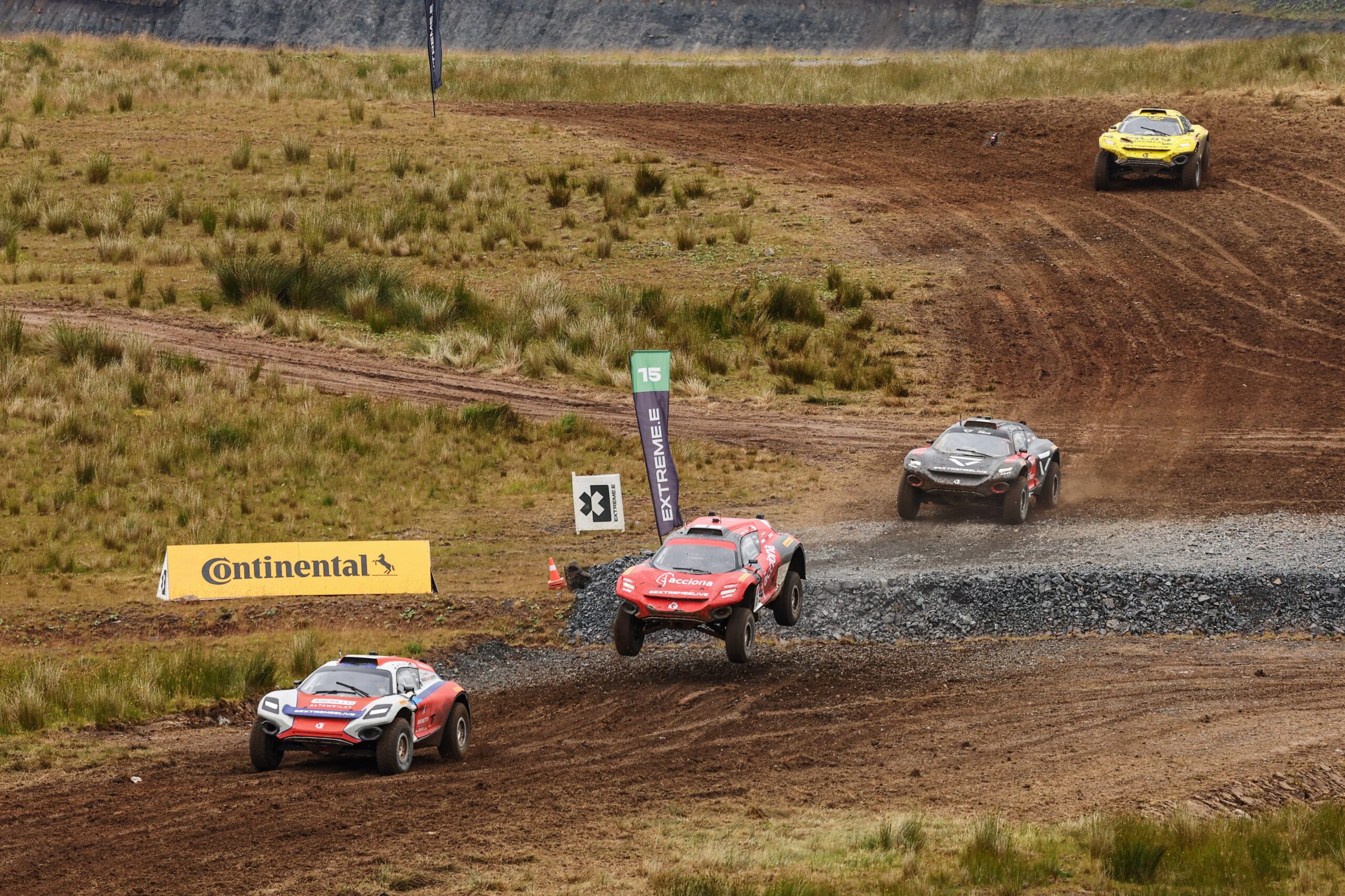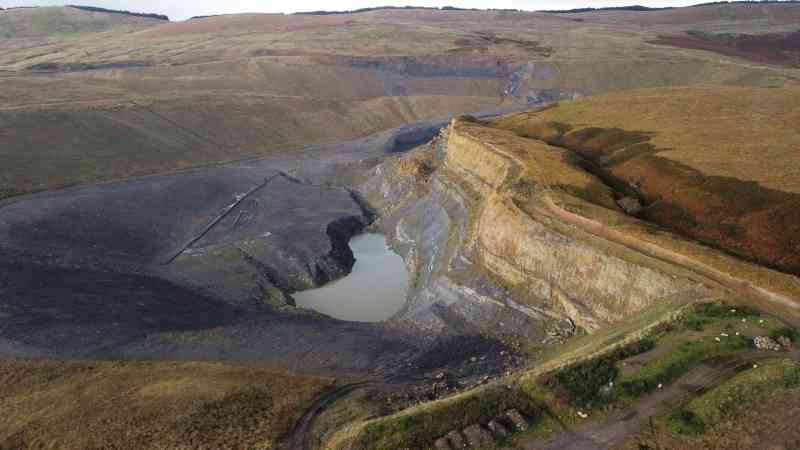Disused Scottish coalmine ready to enter the green power era
Located near the village of Kirkconnel in southwest Scotland, Glenmuckloch was one of the last coalmines in Britain to stop producing. That was in 2017. At its peak, it produced about 500,000 tonnes of coal a year. But although it may be gone, it is far from forgotten.
Glenmuckloch is less than 40 miles from the worst bottleneck on Britain’s electricity grid. As renewable energy on the system has rapidly increased, the infrastructure that transports the wind power generated in Scotland to England and Wales has not kept pace.
Crucially, it has created a pinch point along the Scottish-English border and the disused mine, which last month hosted the opening race of the European leg of the Extreme E motor racing season, could hold the answer. A project to turn the old opencast site into a pumped storage hydro power station will, it is hoped, help to manage the variations between supply and demand that come with having more clean energy on the grid.
The planned redevelopment of Glenmuckloch is being led by Foresight Group, a FTSE 250 asset manager with about £12.1 billion of assets under administration. The involvement of Foresight, a specialist in sustainable infrastructure investments, began in 2022 when it agreed a lease with the Duke of Buccleuch, the largest private landowner by acreage in Britain.
Addressing the ups and downs of variable supply demands an up-and-down solution. The Glenmuckloch pumped storage power station would work by pumping water from a lower reservoir when electricity is cheaper and in plentiful supply via a 700m pipe to an upper reservoir. Then the pumps can be shut and the gates opened to allow the water to flow down, driving turbines at the bottom to generate electricity when supply is short. The process can take a mere five minutes. According to its developers, the power station would be capable of powering about 210,000 homes for eight hours with one full discharge of the upper reservoir and could start dispatching electricity by 2029, the earliest of any of the pumped storage projects being planned.
Unlike some pumped storage power stations, Glenmuckloch will be a closed-loop system. It will take roughly 12 months to fill the lower reservoir via a pumping station with water from the nearby River Nith, and it will not need to be replenished once it starts operating.
Old opencast coalmines can be suited to pumped storage projects because the structure for the lower reservoir is already in place, reducing costs and further disruption to the ground. In the case of Glenmuckloch, only an upper reservoir spanning just over 64 acres would need to be built, capable of holding the 3.5 million cubic metres of water pumped from below. The lower reservoir would be fitted with a membrane to prevent water seeping through the ground and the blackened rockface will be covered with grass.
The green slopes around Glenmuckloch are scattered with wind turbines, as are the hills along the path to the English border. Yet insufficient capacity on the grid to carry all this clean power south, combined with the intermittency of renewable power, means that wind turbines are being paid to switch off.
“There is lots of wind generation in the area and so, as well as having wider system benefits, it also helps to alleviate those grid constraints between Scotland and England,” Richard Thompson, a managing partner at Foresight, said. “It’s also quite symbolic, in a way, that you’ve got something that’s contributed to global warming, through the coal that’s been taken from the site in the past, now being used to help decarbonise the power system here.”
Research by LCP Delta has estimated that by 2035 Britain’s renewable and nuclear plants will generate excess power in 64 per cent of hours across the year, up from 14 per cent last year. However, about half of these events will last less than 24 hours, which means that long-duration storage could be essential to help to balance the system.
There are only four pumped storage stations in Britain today and the last was built in 1984, before the privatisation of the nation’s electricity generation from 1990. Pumped hydro accounts for about 45 per cent of the UK’s total installed storage capacity, compared with 90 per cent globally.
• Not enough new wind and solar farms are being built, warn experts
Pumped storage projects might have the ability to dispatch superior levels of power compared with grid-scale batteries, but they also have high up-front costs. The Glenmuckloch project is estimated at £350 million. Developers like Foresight are therefore calling for long-term contracted revenue.
“The thing that’s preventing us from taking a final investment decision at the moment is not having the regulatory support in place,” Thompson said. “It’s the only type of asset that really doesn’t benefit from some form of regulation or policy support in the UK.”
The previous government started a consultation on a “cap and floor” mechanism, which would guarantee revenues if prices drop below a certain floor but would prevent providers from charging above a ceiling when merchant power prices are high.
Some form of regulation is crucial to attract private capital, according to Thompson. “If you were just to take market revenues, there’s no certainty of making your money back and so, from an investment standpoint, that doesn’t make sense.”
If the price of selling the energy on the wholesale market is higher than the cap, then the money is paid back to consumers via their bills. If market prices are lower than the floor set, then the difference will be added to bills.
“You have to look at that as the asset itself allowing more renewables to be on the grid,” Thompson said. “Renewables are the cheapest form of generation for 80 per cent of the world’s population.”

Maintaining the link between wholesale prices and the allowed returns that a provider can make would encourage dispatch decisions that benefit the grid the most, Thompson argued, more so than paying plants to be available on standby.
Foresight has secured a grid connection and planning consent for its project. It hopes to start construction in 2026, but ultimately is waiting on policy support. “Clearly, it’s not credible to keep gas on the system over the long term if we’re to hit our decarbonisation targets,” Thompson said. “It’s certainly needed in the interim to help us to get there to help us balance the grid.”
Labour has been quiet on pumped hydro electricity. “They’ve stated clearly more ambitious targets to decarbonise the grid. That can only happen if you put assets like Glenmuckloch into the grid,” Thompson insisted.
A spokeswoman for the Department for Energy Security and Net Zero said: “We are taking immediate action implementing our long-term plan to make Britain a clean energy superpower, boosting our home-grown supply by radically increasing the deployment of onshore wind, solar and offshore wind. Alongside this, we will ensure we have the long-term energy storage the UK needs to make the most of clean, home-grown power. We are embracing the future of energy production and storage and will lay out further plans on this in due course.”




Post Comment